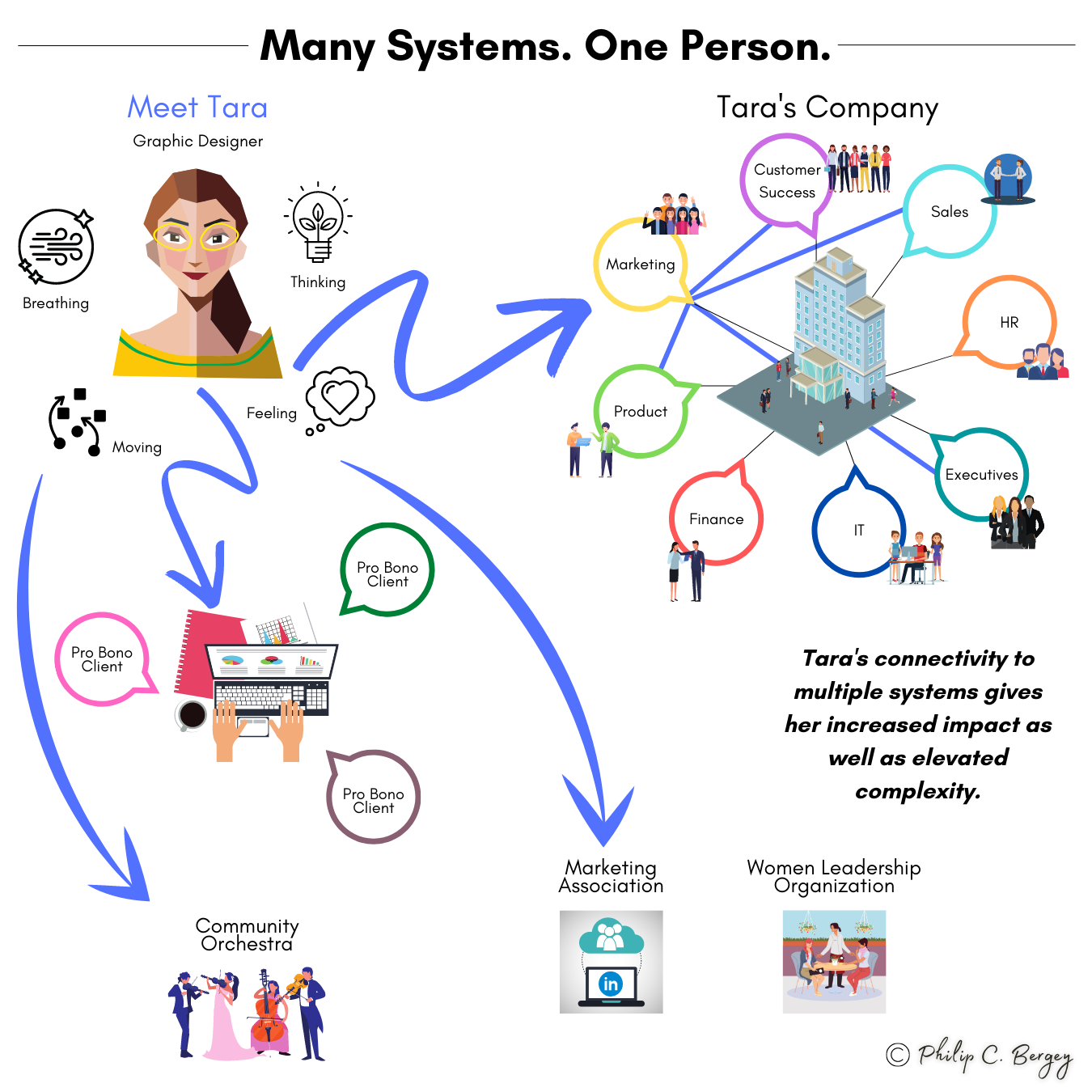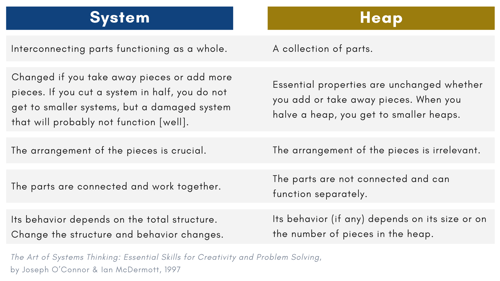
It was near dusk the other day when I went for a walk. A gray squirrel went streaking up an oak tree near me, and just then, a red-tailed hawk with its razor-sharp talons in ready position quickly redirected its flight path to avoid grabbing me. Needless to say, all parties were surprised! The squirrel was startled by me, the hawk was surprised the squirrel had changed directions, and I was stunned by both the squirrel and my near collision with a red-tail.
Nature is comprised of many systems. The squirrel—aware of surroundings and wiser than when the day began, lived to see another day; the red-tailed hawk likely went to sleep hungrier than intended. And I was treated to a rare encounter of nature’s systems in action.
Merriam-Webster dictionary defines a system as “a regularly interacting or interdependent group of items forming a unified whole.” We could simply say that a system is comprised of many interacting parts to form a whole. Further, a system is surrounded and impacted by its environment and is defined by its boundaries, structure, purpose, and how it functions.
When a natural habitat—including in a city park like where I was walking—can support more squirrels and rabbits, that area can also support more hawks: nature’s supply and demand. And sadly, as a lover of raptors like the red-tailed hawk, the opposite is true as well. These interacting systems are part of life, not only in the wild but in all aspects of our own lives.
We participate in countless interacting systems—family, neighborhood, work, social, religious, and many more. Even within any of these, we relate to and are part of systems within systems.
Take work, for example:
Tara, a graphic designer on a marketing team (a small system), interacts with members of other departments (each are separate systems) within the company (itself a system of systems) to form a project team (a cross-functional system). Tara is also a member of three different networks (systems) of marketing professionals through LinkedIn (a system of many parts) and other platforms. Tara also does some pro bono design work for a non-profit organization (a system) in her community (a system) and plays timpani in the town’s volunteer orchestra (of course, another system).

In an older but still highly relevant book, authors O’Connor and McDermott tease out the difference between a system and a heap. A heap is “a collection of parts” like an old workbench strewn with several small wheels, plastic wrappers, paint stirrers, a pencil, old instructions, four types of screwdrivers, and a metal coffee can be filled with a collection of nails, screws, and bolts of all sizes. In contrast, a system is “interconnecting parts functioning as a whole.” The table below shows how a system is different than a heap.

While thinking of departments or teams in a company that don’t interact well together toward a common goal may not seem like a heap, the heap-like characteristics are present. If the impact from painful mistakes is known in one or more departments or teams but not in others, if learning from new ways of communicating is known by one or more teams and not shared with the others (to the benefit of the whole organization), if important data or knowledge is known in one part of and organizational system and not offered or leveraged for the benefit of the others—all these are more heap-like than systems-benefitting dynamics.
In the words of O’Connor and McDermott, “Systems made from very different parts having completely different functions follow the same rules of organization. Their behavior depends on how the parts are connected, rather than what the parts are.” So, it’s important not only to see the parts within a system but especially the relationships of the parts to form a whole. That is, to function as a whole.
.png?width=450&name=051121%20-%20Phil%20Bergey%20Blog%20Image2%20(1).png)
There are many types of systems, but we’ll look at just a few here to show the breadth. I’ll address types of systems and how they are classified in a later blog post when we look at feedback loops within systems.
- Natural systems include our body systems, like our immune or digestive systems (see the fun Ted talk on the charming science of your gut); or the earth’s water system that features rain, bodies of water, and evaporation; or the interacting system of trees and animals like the squirrel and red-tailed hawk from the story I just shared or this short clip of squirrel Houdini.
- Rational systems include digital filing systems (😎sorry, not a role model!), transportation systems, telecommunications systems, or our many systems of language.
- Self-organizing systems include animal swarming behaviors like starlings (called murmuration—check out the gorgeous 1.5-minute video) or swarming anchovetas, neural circuits in our brains that are capable of rewiring themselves, or the ever-present (and ever-irritating!) multi-lane traffic flows and merges.
Relationships are the lifeblood of systems. One of the great challenges in reducing heap-like behavior in organizational life is helping all parts of a system understand and see the ways each benefit from relating more as a whole system. And to do that, all parts of an organizational system need to strengthen the connections—the relationships—that make the many “parts” a whole. Each of us can begin reducing the heap and strengthening the system by asking: What is my relationship with the systems I’m part of? What parts of my life feel heap-like and disconnected? What choices can I make to change my relationship with the systems I’m in?
In future blog posts, we’ll build on highlighting and leveraging positive influence in systems and reducing heap-like behavior—why?—to transform them into healthier relationships that benefit all parts. This allows for more fulfilled people (the parts) making a meaningful contribution, and in turn, also benefits the whole in carrying out its mission more effectively.
Listen to the recent podcast that digs deeper into this blog post topic.

Squirrels are keenly aware of the system around them. Hawks are really cool but don’t always catch their dinner. A system is comprised of many interacting parts to form a whole. A collection of parts is a heap. There are many types of systems. Each of us is part of many systems. Awareness, relationships, communication, and knowledge sharing are vital for parts (people) working together to strengthen a system. Healthier leadership and life grows from being aware of relationships with systems I’m in and being choiceful about my interactions.

- Think of your organization(s).
- What parts of the system come to mind?
- Name one or two factors that seem more heap-like than necessary.
- Where are the disconnects?
- What could you do to help strengthen connections around you?
- What one thing will you do?

Navigating Polarities in Leadership and Life
I’d love to hear from you if this blog raised some important questions you’d like to learn more about. You can reach me directly at philb@designgroupintl.com or by visiting my website.
Listen to the recent podcast that digs into this topic more:
Access more resources for your leadership journey:
 |
 |
 |
Tags:
leadership, relationships, teams, parts, heap, nature, systems, alignment, hawk, Leadership Meets Life Blog/Philip%20C.%20Bergey%20Headshot%20(300x300).png)
May 11, 2021
.png?width=100&name=Phil%20Bergey%20Headshot%20(1).png)


Comments